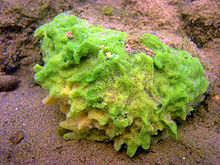
Marquess of Linlithgow, in the County of Linlithgow or West Lothian, is a title in the Peerage of the United Kingdom. It was created on 23 October 1902 for John Hope, 7th Earl of Hopetoun. The current holder of the title is Adrian Hope.

Earl of Annandale and Hartfell is a title in the Peerage of Scotland, created in 1661 for James Johnstone.

The Diadematidae are a family of sea urchins. Their tests are either rigid or flexible and their spines are long and hollow.

Tube-dwelling anemones or ceriantharians look very similar to sea anemones but belong to an entirely different class of anthozoans. They are solitary, living buried in soft sediments. Tube anemones live inside and can withdraw into tubes, which are composed of a fibrous material made from secreted mucus and threads of nematocyst-like organelles known as ptychocysts. Within the tubes of these ceriantharians, more than one polyp is present, which is an exceptional trait because species that create tube systems usually contain only one polyp per tube. Ceriantharians were formerly classified in the taxon Ceriantipatharia along with the black corals but have since been moved to their own class, Ceriantharia.

Penney is a common surname of British origin.
The Grand Orient of Portugal is a symbolic Masonic Obedience founded in 1802, thus being the oldest Portuguese Masonic Obedience. Its first Grand Master was Sebastião José de São Paio de Melo e Castro Lusignan, grandson of the first Marquis of Pombal, and his symbolic name was Egas Moniz.

Spongilla is a genus of freshwater sponges containing over 200 different species. Spongilla was first publicly recognized in 1696 by Leonard Plukenet and can be found in lakes, ponds and slow streams.Spongilla have a leuconoid body form with a skeleton composed of siliceous spicules. They are sessile organisms, attaching themselves to hard substrate like rocks, logs and sometimes to ground. Using their ostia and osculum these sponges filter the water for various small aquatic organisms such as protozoans, bacteria, and other free-floating pond life. Sponges of the genus Spongilla partake in symbiotic relationships with green algae, zoochlorellae. The symbiotic zoochlorellae give the sponges a green appearance and without them they would appear white.

Bithyniidae is a family of small freshwater snails with an operculum, aquatic gastropod molluscs in the clade Littorinimorpha.
Radiospongilla is a genus of freshwater sponges in the family Spongillidae. It was defined by Penney and Racek in 1968. The type species is Radiospongilla sceptroides.
Radiospongilla sceptroides is a species of freshwater sponge in the family Spongillidae. It was described as Spongilla sceptroides by Scottish-born Australian zoologist William A. Haswell in 1883, who discovered it growing on submerged wood in a pond in the vicinity of Brisbane. He described it as "Sponge green, encrusting, smooth, moderately elastic, not crumbling." He noted the spicules were fusiform and pointed. It was found growing next to a yellowish freshwater sponge that he described as Spongilla botryoides. A 1968 review of freshwater sponges failed to locate Haswell's original type specimen, so a new one was selected from the Merrika River near Womboyn in New South Wales.
Racekiela is a genus of freshwater sponges in the family Spongillidae.

Potamolepidae is a family of freshwater sponges, with seven genera:
Metaniidae is a family of freshwater sponges, with five genera and 27 species:

Anheteromeyenia is a genus of freshwater sponge. It has been recorded in the Nearctic, the Neotropics. This taxon was initially a subgenus of Heteromeyenia when K. Schöder circumscribed it in 1927, but W. M. de Laubenfels made it a genus in its own right in 1936.
Heteromeyenia is a genus of sponges belonging to the family Spongillidae.
Eunapius is a genus of sponges belonging to the family Spongillidae.
Metania is a genus of sponges in the family Metaniidae.
Drulia is a genus of freshwater sponges in the family Metaniidae.
Houssayella is a genus of freshwater sponges in the family Metaniidae.










